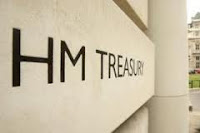If you don't want to know the ending to the film Money Never Sleeps, stop reading now.
For the rest, I have to say I'm troubled by whether audiences believe the ending to this movie is a positive "Hollywood" resolution, instead of the grimly ironic testament to persistent greed that it actually is.
To cut the story short, Gordon Gecko, immortalised by the line "Greed...is good", leaves jail after doing time for crimes committed during Wall Street, only to trick his 'leftist' daughter and her naïve fiancé into returning $100 million of the ill-gotten gains Gordon had salted away in his daughter's name. She'd been going to give it to charity, but her fiancé convinced her to invest it via him and Gordon in a 'clean-tech' alternative energy company (the nature of whose connection with the fiancé is never satisfactorily explained). Gordon somehow diverts the cash, ruining their plans and their relationship in one hit. As a result, he's told he'll never see his grandson-to-be, which seems to be the only thing in the world that really bothers Gordon. In the final scene, however, Gordon is redeemed in the eyes of his daughter and her fiancé - and heals the emotional rift between them - by dropping by to announce that he's deposited a freshly laundered $100 million in the bank account of said energy company. Gordon can now spare the cash, he happily explains, because he's just made another fortune shorting the markets and managed to skim a little cream for himself via the Cayman Islands. Cue the wedding and dancing.
I guess one can't blame a daughter for wanting her dear old dad to be around her child, even if he is only anxious to teach the kid the equivalent of safe-cracking. But I was struck by the fact that she's also billed as a 'leftist' and that she and her fiancé share a passion for 'clean-tech' alternative energy. And I reckon the example of their easy forgiveness in the film might be a sign that audiences think that the Bernie Madoffs of this world - indeed our financial institutions - can redeem themselves simply by investing their ill-gotten gains in 'worthy causes' - or by repaying their bailout money - rather than by behaving ethically.
Or, in other words, that greed is still good.
This is chilling enough when you consider that such a view would endorse the illegality, or at least the immorality, of the mortgage brokers and bankers who gleefully shoveled the likes of NINJA loans into the bond markets and even simultaneously shorted the resulting bonds - all at the taxpayers' expense. But it's especially chilling given the recent sober reminder from Hank Paulson, formerly both Chairman/CEO of Goldman Sachs and US Treasury Secretary at the start of the financial meltdown (somewhat simultaneously, some seem to be suggesting):
"Speaking close to the two-year anniversary of Lehman Brothers' collapse, Mr Paulson said that while he welcomed much of the new financial regulation, it would not be enough to prevent another crisis. "We have to assume that regulation won't be perfect. We'll have another financial crisis sometime in the next 10 years because we always do.""
Timely, too, that UBS, the global investment bank, should announce today that it won't be pursuing the former senior managers who appear to have put in place “incentives...to generate revenues without taking appropriate consideration of the risks [that]...facilitated losses” because any such court action would be “more than uncertain”, expensive and “lead to negative international publicity and thus hamper UBS’s efforts to restore its good name in the markets” [my emphasis]. What's that a 'good name' for, exactly? And what sort of message does that meek surrender send to the current management, clients and other stakeholders?
Why, that greed is still good, of course.
Paulson, perhaps ironically, is right. No amount of regulation will change this cultural belief. It's a crisis of leadership, yes, but only because we get the leadership we deserve. Cultural change is something that must evolve bottom-up.
And that's what troubles me about the forgiveness, wedding and dancing at the end of Money Never Sleeps. If Hollywood had been confident that our values had changed, the only thing that would have united the young lovers would have been a strenuous and simultaneous citizens' arrest.
Paulson, perhaps ironically, is right. No amount of regulation will change this cultural belief. It's a crisis of leadership, yes, but only because we get the leadership we deserve. Cultural change is something that must evolve bottom-up.
And that's what troubles me about the forgiveness, wedding and dancing at the end of Money Never Sleeps. If Hollywood had been confident that our values had changed, the only thing that would have united the young lovers would have been a strenuous and simultaneous citizens' arrest.






